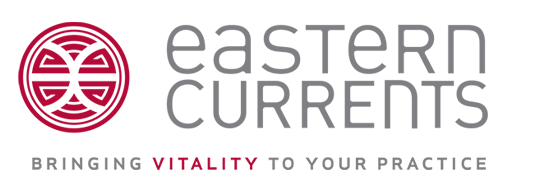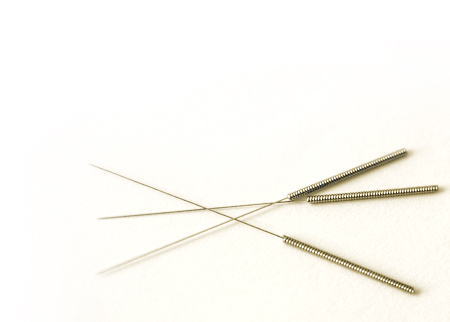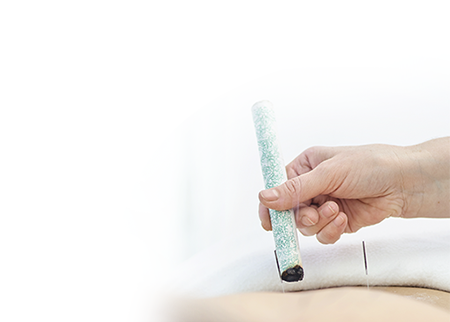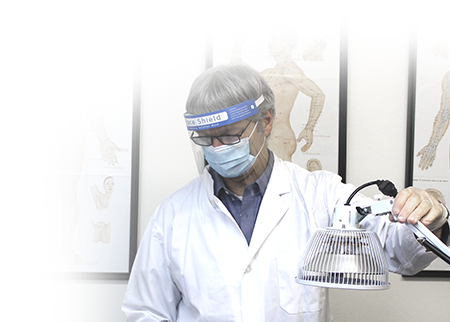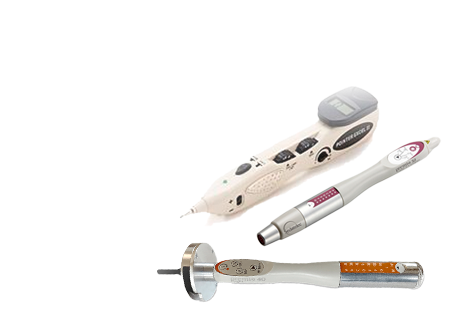Barbara de la Torre
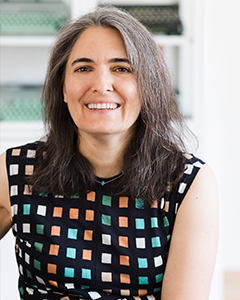 Barbara de la Torre is a physician, thought leader, and podcaster who speaks and writes about health strategy with an integrative lens. She lectures on reframing healthcare through systemic changes around self-care, prevention, and collaboration. Dr. de la Torre founded her company, Third Opinion MD, as a way to spark a wave of change in the practice of medicine and how people can best navigate existing healthcare systems. She lectures on topics that infuse the fundamental principles of Chinese medicine into conventional medicine. She educates patients and healthcare practitioners on topics that include qigong, health strategy, and systems solutions to growing healthcare challenges.
Barbara de la Torre is a physician, thought leader, and podcaster who speaks and writes about health strategy with an integrative lens. She lectures on reframing healthcare through systemic changes around self-care, prevention, and collaboration. Dr. de la Torre founded her company, Third Opinion MD, as a way to spark a wave of change in the practice of medicine and how people can best navigate existing healthcare systems. She lectures on topics that infuse the fundamental principles of Chinese medicine into conventional medicine. She educates patients and healthcare practitioners on topics that include qigong, health strategy, and systems solutions to growing healthcare challenges.
Dr. de la Torre has over 30 years of experience in Western and Chinese medicine and holds dual Board certification in Family Medicine and Medical Acupuncture. She has additional training in psychiatry and years of working experience in primary care, obstetrics, gynecology, and urgent care. Dr. de la Torre is also Master Certified in Medical Qigong from the Ling Gui lineage, which she considers her most valuable medical education.
Dr de la Torre currently serves on the board of the American Academy of Medical Acupuncture (AAMA), a medical organization dedicated to the integration of the practice of medicine and acupuncture. She also serves on the AAMA committee to review lectures and workshops for continuing medical education accreditation. She served for six years on the Acupuncture Advisory Committee for the Medical Board in her home state of Oregon. This year, she will formally join as faculty with the Helms Medical Institute, which is an organization that educates physicians in Medical Acupuncture.
Qigong
Barbara de la Torre brings extensive knowledge of medical qigong to the morning sessions. She will offer short forms, routines, and/or meditations to help participants feel more alert, calm and centered. Barbara is one of the few students to graduate with Master Level certification in Medical Qigong from the Ling Gui International Healing Qigong School. This qigong method comes from a Daoist family lineage dedicated to awaken one’s innate healing capacity, and it has been handed down and sustained for several generations.
 Revolutionize Healthcare the Yin Way: A Dynamic Systems Approach to Bridge Eastern and Western Medicine
Revolutionize Healthcare the Yin Way: A Dynamic Systems Approach to Bridge Eastern and Western Medicine
TCM practitioners face several obstacles for acceptance in a dominant healthcare system, which adopts a different language and operates through a biomedical lens. When confronted with an evidence-based world, the assumptions are to provide the evidence and to convince conventional thinkers that Chinese medicine does not operate in this way. This lecture proposes an expansion of thinking beyond treating blockages in patients to correcting the imbalances in the healthcare system itself.
Dynamic systems theory offers a language to connect Eastern and Western medicine. Chinese medical practitioners already have a foundation in systems thinking. The theories of yin yang and 5-elements represent some of the most elegant and functional examples of complex system models. The intended outcome is to encourage the audience to expand their systems thinking outside the clinic walls while also cultivating the inner self in context with the world around them.
Tai Yi Noble Star Qigong, Part 1: Clear the Six Roots and Open the Heart
Tai Yi Noble Star Qigong is about returning to who we are at the core, moving inward, and clearing blockages in order to perceive our environment with an open heart. The workshop addresses feelings of shame when our treatments fail to help patients or if we succumb to illness despite our knowledge and practice of profound and effective healing methods. Tai Yi Noble Star activates the internal GPS to help us connect with the environment without losing our inner direction as healers. The first half of the form will be taught along with lecture and interactive discussion. While the first half of the form can performed as a stand-alone practice, Barbara will demonstrate the full form and discuss the features of the second half if time permits.
Toby Daly
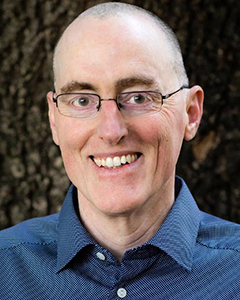
Toby received his undergraduate degree in Food Science from the California Polytechnic State University at San Luis Obispo. He began studying Chinese medicine in 1997 with a Korean monk trained in the Saam tradition. He earned his master’s degree in Traditional Chinese Medicine in 2002 upon completion of training at the American College of Traditional Chinese Medicine in San Francisco and Chengdu University in China.
During his four years of training in San Francisco, he interned with the prominent acupuncturist Dr. Angela Wu and learned to apply the lofty theories he was studying in school into the pragmatic setting of a busy clinic. In 2013, he developed the Chinese Nutritional Strategies app to provide digital access to the wealth of Chinese dietary wisdom. In 2016, he completed a PhD in Classical Chinese Medicine under the guidance of 88th generation Daoist priest Jeffery Yuen. In 2021, he developed the Chinese Medical Characters app to enable direct access to foundational Chinese medical terms and concepts.
His current focus is on sharing his 25 years of clinical experience with the Saam tradition.
 Saam Acupuncture Tradition: The Twelve Bioregions of the World
Saam Acupuncture Tradition: The Twelve Bioregions of the World
The twelve conduit vessels link up with the twelve stream waters outside, and they are connected with the five zang and the six fu inside.” (Unschuld)
Chapter 12 of the Huang Di Nei Jing Ling Shu correlates the qualities of twelve ancient watersheds with the twelve primary acupuncture channels. In this discussion, we will continue this exploration begun by the Ling Shu by examining qualities found in the ecosystem and reflected in the human body.
We will recognize how the distinctive qualities of twelve global bioregions correlate with the twelve primary channels, when these channels are seen through the lens of the Saam tradition. Perceiving these twelve qualities in the macrocosm will aid us in distinguishing these very same qualities when they present in the microcosm of our patients.
Saam Acupuncture Tradition: The Twelve Primary Channels
It is by virtue of the twelve channels that human life exists, that disease arises, that human beings can be treated, and illness cured.”
Huang Di Nei Jing Ling Shu Chapter 17 (Deadman)
This discussion will provide an overview of the twelve primary channels as they are utilized by the Saam Korean monastic acupuncture tradition. Special attention is given to exploring the Saam tradition’s synthesis of core theories from the Yi Jing, Huang Di Nei Jing, and Nan Jing texts. This unique synthesis provides the basis for the qualities of the twelve channels as well as for the application of the clinically potent four-point combinations at the heart of the tradition.
This overview of the twelve channels will demonstrate the Saam system’s insights into the compatibility of aspects of Chinese medical theories traditionally thought to be disparate – the Five Phase and Six Conformation models. This discussion will show how these models can be harmoniously united and employed to inform all aspects of the Saam tradition.
Shellie Goldstein
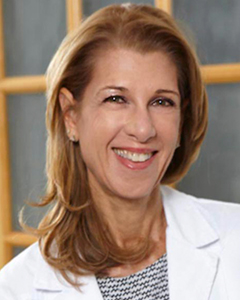
Dr. Shellie Goldstein, DACM, is widely considered one of the worldwide experts on cosmetic facial acupuncture. She is the author of Your Best Face Now: Look Younger in 20 Days With The Do-It-Yourself Acupressure Facelift and creator of Touch+Glow: The Do-It-Yourself Acupressure Facelift Kit.
As a leading authority and educator of cosmetic facial acupuncture, Dr. Goldstein founded the Academy of Advanced Cosmetic Facial Acupuncture, which has recently partnered with the Pacific College of Health Sciences to present the Facial Applications of Cosmetic Enhancement Training Program (aka the FACE program). The FACE program offers a flexible combination of virtual interactive classroom learning and hands-on, intensive clinical mentorship and training.
Ms. Goldstein has been featured on major television and cable networks and in the press. She is also a columnist for Acupuncture Today news.
 Fascia and the Lymphatic System: Bridging the Gap Between East and West
Fascia and the Lymphatic System: Bridging the Gap Between East and West
Fascia in modern anatomy and physiology is embedded in the concept of Jingjin or the sinew channels. In Traditional Chinese Medicine the lymphatic system is linked to the concept of jin ye (body fluids) and the San Jiao. Recognizing and understanding the parallels of Eastern and Western healthcare systems can lead to enhanced professional collaboration and improved patient care.
 Exploring Connective Tissue Integrity and Lymphatic Drainage for Facial Health and Integrity
Exploring Connective Tissue Integrity and Lymphatic Drainage for Facial Health and Integrity
A three-hour lecture and demonstration.
This lecture and demonstration will explore techniques for improving facial health and appearance by releasing fascia and stimulating lymph flow with acupressure massage, face cupping, and facial gua sha, for a tighter, brighter, healthier look and feel.
